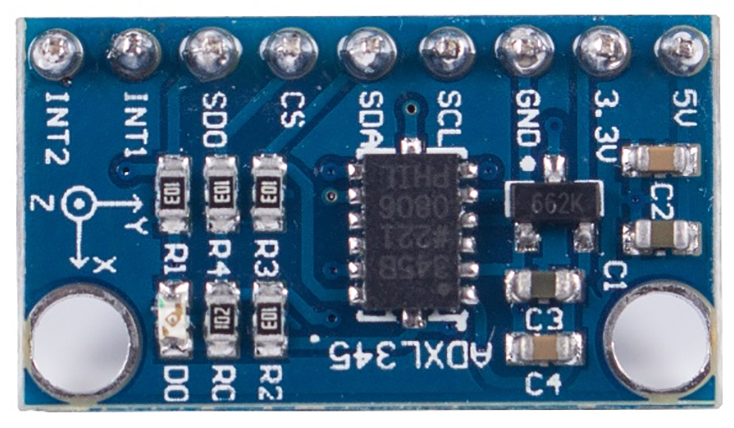Digital Accelerometer ADXL345 Module
Digital Accelerometer ADXL345 Module
Introduction
The ADXL345 is a small, thin, low power, 3-axis accelerometer with high resolution (13-bit) measurement at up to ±16 g. Digital output data is formatted as 16-bit two’s complement and is accessible through either an SPI (3- or 4-wire) or I2C digital interface.
The ADXL345 is well suited to measure the static acceleration of gravity in tilt-sensing applications, as well as dynamic acceleration resulting from motion or shock. Its high resolution (4 mg/LSB) enables the inclination change measurement by less than 1.0°. And the excellent sensitivity (3.9mg/LSB @2g) provides a high-precision output of up to ±16g.
In this experiment, I2C digital interface is used.
See the following figure for the schematic diagram. There is a 3.3v voltage regulator chip in the circuit, so you can power the module with 5V or 3.3V.
Features
Ultra low power: 25 to 130 µA at VS = 2.5 V (typ)
Power consumption scales automatically with bandwidth
User selectable fixed 10-bit resolution or 4mg/LSB scale
factor in all g-ranges, up to 13-bit resolution at ±16 g
32 level output data FIFO minimizes host processor load
Built in motion detection functions
• Tap/Double Tap detection
• Activity/Inactivity monitoring
• Free-Fall detection
Supply and I/O voltage range: 1.8 V to 3.6 V
SPI (3 and 4 wire) and I2C digital interfaces
Flexible interrupt modes – Any interrupt mappable to either
interrupt pin
Measurement ranges selectable via serial command
Bandwidth selectable via serial command
Wide temperature range (-40 to +85°C)
10,000 g shock survival
Pb free/RoHS compliant
Small and thin: 3 × 5 × 1 mm LGA package
Resource
DS1302_datasheet![]()
[[]]
